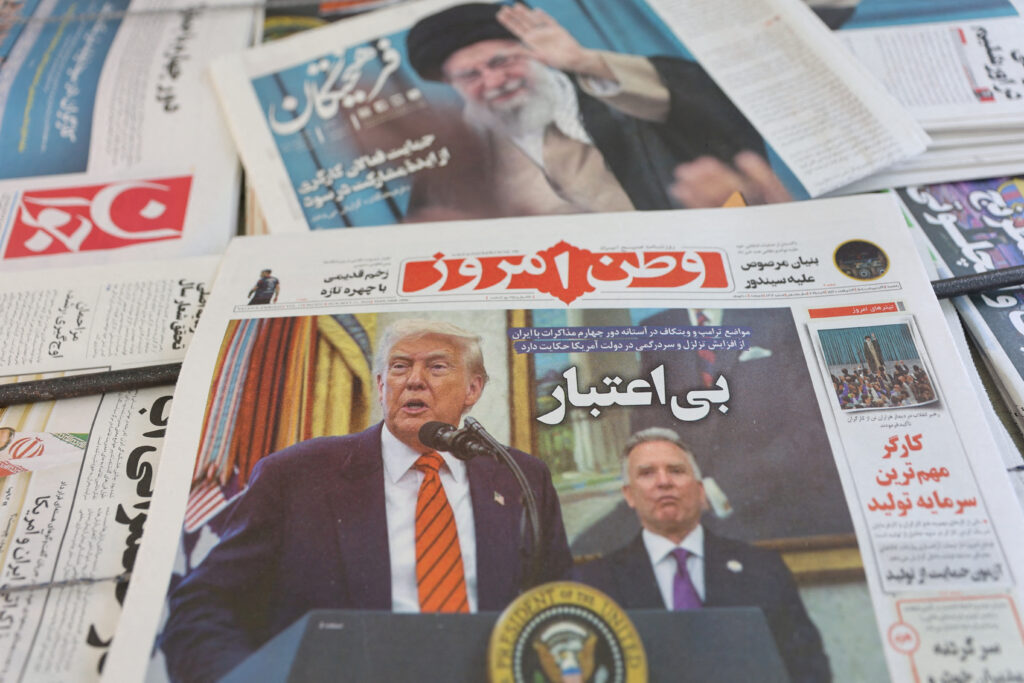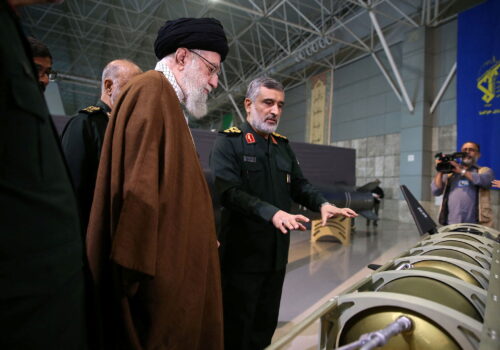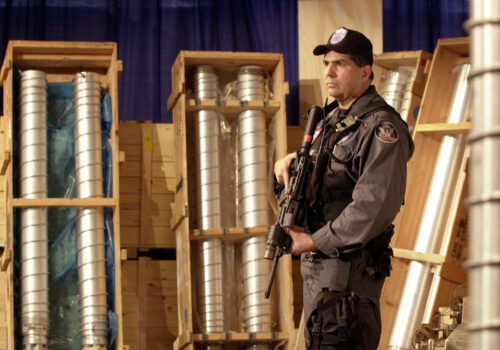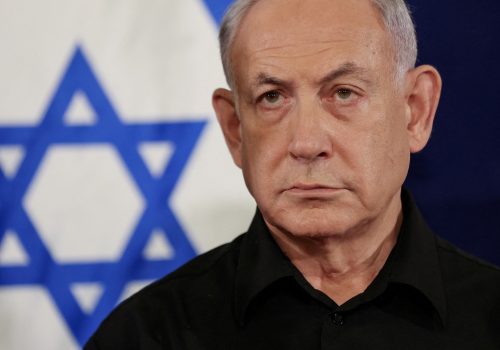Sunday’s fourth meeting between US President Donald Trump’s Middle East Special Envoy Steve Witkoff and Iranian Foreign Minister Abbas Araghchi didn’t end with a framework agreement, as reports before the meeting indicated it could. But sufficient progress was apparently made that negotiations will continue, and the sides may have gotten closer together on key differences. That progress comes even as public comments from both sides highlight conflicting redlines, suggesting that behind closed doors, one or both sides are willing to be more flexible than they’re saying in public. It could also mean that either Iran or the United States is confident it can convince the other side to move off its current position.
If Iran and the United States ultimately bridge these differences and reach a deal, how will we know if it’s a good one? Here’s my guide for how to grade various potential outcomes of these high-stakes negotiations.
A: Resolution of the nuclear problem and regional malign influence
The issue of Iran’s nuclear program is almost certainly the focus of the talks, and an understandable one given how close Iran is to having enough enriched uranium for a bomb. But if it is indeed the only issue on the table, siloing it off from the Islamic Republic’s efforts to advance its ballistic missile program, regional malign influence, terrorism operations, and global assassination and hostage-taking campaigns is a mistake—one that ensures a great deal worthy of an A grade is already off the table.
In seeking a narrow, nuclear-only deal, Trump is almost certainly ensuring most, if any, of those other challenges will simply never be addressed, just as they were not after the 2015 Joint Comprehensive Plan of Action (JCPOA). That would leave Iran’s position in the Middle East strengthened and the region less safe overall.
B: Full dismantlement
To get a good deal and earn a solid B grade, Trump would have to ensure that Iran fully dismantle its nuclear program, giving up its right to enrichment for civilian nuclear power. Iran claims this is the purpose of its current program, but the option to have nuclear power exists without enrichment. Other countries import the fuel, run it through their reactors, and ship the spent fuel back to its origin.
This agreement alone would not be enough to achieve a B grade, though. Iran would also have to agree to give up all of its centrifuges, which are used for spinning uranium to build a stable nuclear device, and allow them to be removed from the country. In other words, a good deal means Iran being willing to give up its program fully, similar to what Libya did in 2003. Witkoff recently said that if Iran doesn’t want a nuclear weapon, as its leaders have long claimed, then “their enrichment facilities have to be dismantled. They cannot have centrifuges.”
But such a scenario is highly unlikely. Iran has continuously professed its right to enrich uranium and its current “moderate” political leaders, President Masoud Pezeshkian and Araghchi, would almost certainly struggle to convince an already skeptical Supreme Leader Ali Khamenei to agree to give up a right he has long advocated—particularly given how things ended for Libya’s dictator. Moreover, Pezeshkian and Araghchi would probably be concerned that even offering that trade could prompt such intense blowback from hardliners that their own leadership could be at risk.
C: “Civilian” enrichment with stringent conditions
In a deal worthy of a C grade, Iran would be permitted to enrich uranium to 3.67 percent, the course of action seemingly preferred by at least some in the administration, including Vice President JD Vance. Such an amount would be sufficient for Iran to have a civilian program, but Iran would have to accept more permanent restrictions than existed as part of the JCPOA deal.
Iran would have to give up its more advanced centrifuges—known as IR-8, IR-6, and IR-2 centrifuges—that, in essence, provide it with the capability to more quickly enrich uranium than its original IR-1 design. But there would also have to be strict limits on the IR-1s themselves. Otherwise, production capacity would eventually exceed that of more advanced centrifuges; it would just take a while.
Moreover, a deal earning a C would not put a time limit on the restrictions or have sunset clauses like in the JCPOA, something Witkoff claimed would be the US position, stating, “there’s no sunsetting of their obligations.” Among the most critical sunsetting provisions in the JCPOA were those that expired in 2023 related to ballistic missiles and those set to expire in 2031 that lifted restrictions on Iran’s uranium enrichment level and stockpile. Finally, Iran would have to agree to inspections from not only the International Atomic Energy Association (IAEA) but also from the permanent five members of the United Nations Security Council and Germany, aka the “P5+1” nations that negotiated the JCPOA.
Such a deal would be far from ideal. The threat of Iran being able to obfuscate its enrichment development would be perpetually present, no matter how intense the inspections. But even if Iran complied with the new agreement and restrictions, the domestic conditions in Iran, and the regional situation in the Middle East, will not remain stagnant. If conditions deteriorate, an Iranian regime under threat could quickly decide to restart its nuclear program. Iran could give up a lot in a deal, but there is no Men in Black “neuralyzer” to erase Iranian knowledge of how to properly enrich uranium and create a nuclear weapon.
D: “Civilian” enrichment with advanced centrifuges
For a below-average D grade, a deal would have the same bounds as for a C, but without Iran agreeing to give up its more advanced centrifuges or allowing in inspectors from the P5+1 to monitor its compliance with the agreement. Such a deal would leave Iran perpetually on the cusp of having a nuclear weapon, with less leverage than ever by the United States and its allies to prevent it.
F: “Civilian” enrichment with sunset clauses
And finally, an F would be the correct grade for a deal that permits an Iranian civilian nuclear program with domestic enrichment, does not compel Iran to give up its centrifuges (only to put them in storage), prohibits non-IAEA inspectors, and contains multiple sunset clauses.
Allowing sunsets almost ensures Tehran’s return to the concept of strategic patience and that some years from now, the world will once again be at risk of another crisis over Iran getting a nuclear weapon. Buying time is not always an unreasonable strategy; it wasn’t during the original JCPOA. But that was at a time when Iran was months to years from having enough enriched uranium for a single bomb. Today, Iran is only days away.
Trump may well be on his way to getting a deal with Iran over its nuclear program. But whether it passes the test will depend on its details.
Jonathan Panikoff is the director of the Scowcroft Middle East Security Initiative at the Atlantic Council and a former deputy national intelligence officer for the Near East on the US National Intelligence Council.
Further reading
Tue, May 6, 2025
Beyond the bomb: Ideology as the engine of Iran’s nuclear doctrine
MENASource By
The US cannot overlook that Iran’s nuclear program is not simply about deterrence—it is a tool for advancing a revolutionary ideology.
Wed, Apr 30, 2025
From Tripoli to Tehran: Lessons from Libya in US-Iran nuclear talks
MENASource By
Twenty-one years later, the nuclear disarmament of Libya serves as a model for the United States in current nuclear negotiations with Iran.
Mon, Apr 28, 2025
Why Israel will resist any US-Iran nuclear deal
MENASource By Danny Citrinowicz
Negotiations between the United States and Iran have displayed a significant divide between Washington and it’s ally Israel.
Image: An Iranian newspaper with a cover photo of U.S. President Donald Trump and U.S. Middle East envoy Steve Witkoff, is seen in Tehran, Iran, May 11, 2025. Majid Asgaripour/WANA (West Asia News Agency) via REUTERS.




